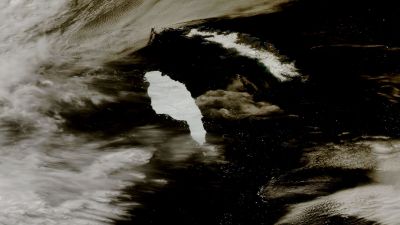British Antarctic Survey finds Iceberg the size of Luxembourg reduced saltiness of the sea

A massive iceberg the size of a small European country reduced salt levels in the Southern Ocean, researchers have found.
The giant object known as A-68, as big as Luxembourg, also significantly changed the Southern Ocean’s temperature with potentially major consequences for the region.
The object, more than 50 times the length of the iceberg which sank the Titanic, broke off from the Larsen C ice shelf.
In 2020 it drifted close to South Georgia, around 900 miles from the Falklands where it started to break up.
Researchers from the Cambridge-based British Antarctic Survey and University of Sheffield used satellite data to observe how the melting iceberg affected the temperature and saltiness of the top few centimetres of the ocean surface.
They saw that the meltwater caused "extreme anomalies in the temperature and saltiness of the waters at the ocean surface, of magnitudes that have not been reported for any previous iceberg disintegration so far."
Researchers recorded temperatures up to 4.5°C colder than average. The surface ocean also became around two-thirds of its normal saltiness.
This ‘signal’ from the melted iceberg eventually extended well beyond South Georgia; it was carried by ocean currents to form a long plume that stretched up to more than 1000km across the South Atlantic – roughly the distance from Land’s End to John O’Groats.
Climate scientist Roseanne Smith at British Antarctic Survey said: “The A-68 iceberg was one of the largest and most studied of all icebergs.
"When it started to break apart, it was a bit like installing a major river estuary into the open ocean, pumping cold, freshwater into the surface layer.
"Our results show that each individual melting giant iceberg can have widespread and long-lasting impacts on the conditions at the surface of the Southern Ocean, and this has consequences for the plant and animal life that lives there.”
Professor Grant Bigg, from the University of Sheffield, said: "Climate change is likely to see more giant iceberg calving in the future; it is important to monitor these so future impacts on ocean circulation, biology and seafloor geology can be assessed and predicted."
The results are published this week in the journal Geophysical Research Letters.
Want a quick and expert briefing on the biggest news stories? Listen to our latest podcasts to find out What You Need To Know